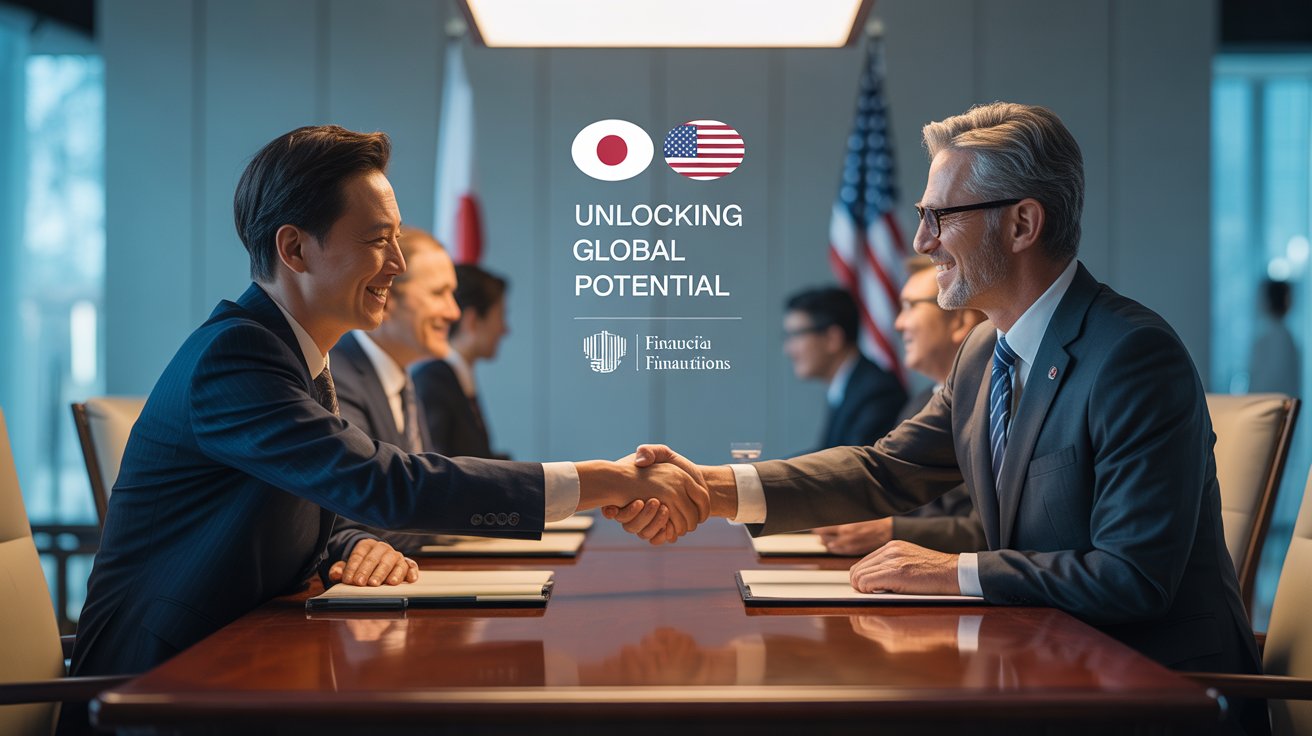
In a major financial development, Japan has announced the launch of a $550 billion investment facility through the Japan Bank for International Cooperation (JBIC) as part of a trade deal with the United States. This initiative is not only one of the largest investment commitments in modern economic history but also a strategic move designed to strengthen global trade partnerships, secure access to critical resources, and position Japan as a leader in the future of global finance.
The program will provide equity, loans, and guarantees to industries such as semiconductors, metals, energy, and shipbuilding, signaling a bold step toward long-term economic resilience. For investors, this move opens up new opportunities in global markets, technology, and energy infrastructure. In this article, we’ll break down the details of this historic investment facility, analyze its potential global impact, and explore what it means for traders, businesses, and policymakers worldwide.
1. Background: Why Japan Is Investing $550 Billion Now
Japan’s decision to allocate $550 billion is not random. It comes at a time when the global economy faces:
- Supply chain disruptions due to geopolitical conflicts.
- Energy insecurity amid transitions to renewable power.
- Rising demand for semiconductors driven by artificial intelligence, 5G, and digital transformation.
- Strategic competition with China in critical technologies and trade dominance.
By aligning with the United States in a trade deal, Japan is ensuring not only its economic security but also reinforcing the U.S.-Japan strategic alliance. This collaboration reflects the new era of friend-shoring, where countries prefer to invest in trusted trade partners rather than risk dependencies on geopolitical rivals.
2. Key Sectors Covered by the Investment Facility
The facility is expected to channel funding into four priority sectors:
🔹 Semiconductors
Semiconductors are the “new oil” of the 21st century. Every industry—from consumer electronics to defense—depends on chips. Japan’s investment aims to:
- Expand domestic and joint U.S.-Japan semiconductor plants.
- Reduce reliance on Taiwan and South Korea for chip supply.
- Support R&D in AI chips, quantum computing, and automotive chips.
🔹 Metals and Rare Earths
Metals like lithium, cobalt, and nickel are essential for electric vehicle batteries and renewable energy systems. Japan will:
- Secure supply chains through mining investments abroad.
- Partner with the U.S. on strategic reserves of critical minerals.
- Reduce dependence on China, which currently dominates rare earth processing.
🔹 Energy
Energy is at the heart of this deal. Investments will go into:
- Liquefied natural gas (LNG) infrastructure to ensure stable energy imports.
- Renewable projects such as offshore wind, solar, and hydrogen.
- Nuclear energy modernization in collaboration with U.S. firms.
🔹 Shipbuilding and Infrastructure
With global trade still heavily dependent on maritime transport, Japan seeks to:
- Strengthen its shipbuilding industry.
- Develop green ships powered by hydrogen or LNG.
- Modernize ports and trade routes for U.S.-Japan logistics.
3. The Strategic Importance for the U.S.-Japan Trade Partnership
This investment facility strengthens one of the world’s most important trade alliances.
- For the U.S.: It secures reliable Asian partners in critical technologies, helping to counterbalance China’s influence.
- For Japan: It provides a stronger foothold in global trade while boosting its industries with U.S. cooperation.
- For global markets: It increases stability and reduces risks of major supply chain shocks.
This is more than just an investment—it’s a geopolitical and economic strategy that positions the U.S. and Japan as leaders in global financial stability.
4. Opportunities for Investors
Investors should pay close attention to industries tied to this deal.
🔹 Semiconductor Stocks
Companies in Japan, the U.S., and allied countries involved in semiconductor manufacturing are likely to see increased government support, subsidies, and growth.
🔹 Mining and Metals ETFs
Funds tracking rare earths and critical minerals will benefit as Japan secures supply chains and expands partnerships.
🔹 Renewable Energy and LNG
With billions going into green energy and LNG, renewable energy firms and shipping companies with eco-friendly fleets will become more attractive.
🔹 Infrastructure and Shipbuilding
Investors can expect growth in companies working on shipbuilding, port construction, and logistics.
5. Challenges and Risks
Despite its scale, the $550 billion facility faces challenges:
- Execution risks: Allocating funds efficiently across multiple industries is complex.
- Geopolitical tensions: China may retaliate against Japan’s alignment with the U.S.
- Technological race: Catching up with Taiwan and South Korea in semiconductors will take time.
- Global recession risks: If markets slow down, investment returns may face delays.
6. Long-Term Global Impact
This investment facility is more than a national initiative—it is a blueprint for future global trade cooperation. By working with the U.S., Japan is creating a model for:
- Secure supply chains in critical sectors.
- Sustainable energy partnerships across nations.
- Resilient financial systems that reduce risks of overdependence on one country.
The move also sets the stage for Asia-Pacific regional cooperation, where other allies like South Korea, Australia, and India could join similar frameworks.
7. Conclusion: A Defining Moment for Global Finance
Japan’s launch of a $550 billion investment facility under its U.S. trade deal is one of the most ambitious financial moves of 2025. It addresses immediate economic needs, prepares for long-term technological dominance, and strengthens one of the world’s most important alliances.
For investors, this initiative signals huge opportunities in semiconductors, energy, and infrastructure. For policymakers, it represents a strategic shift toward friend-shoring and global economic resilience. And for the global financial system, it marks the beginning of a new era of large-scale cooperative investments between allies.
Japan investment facility, Japan US trade deal, $550 billion investment Japan, JBIC investment news, semiconductor investments 2025, rare earth metals Japan, Japan energy investments, Japan shipbuilding finance, global finance news 2025, Japan US economic alliance